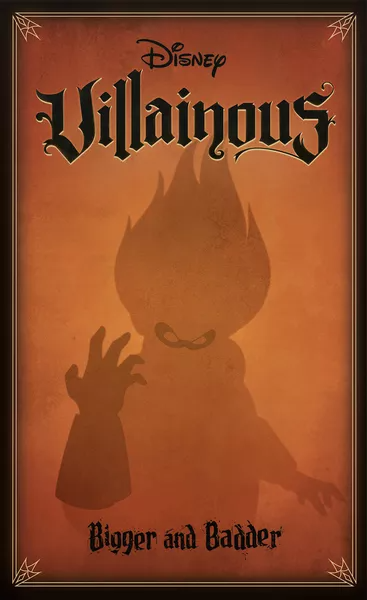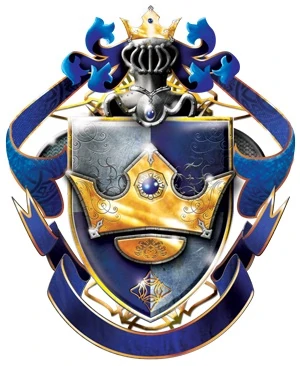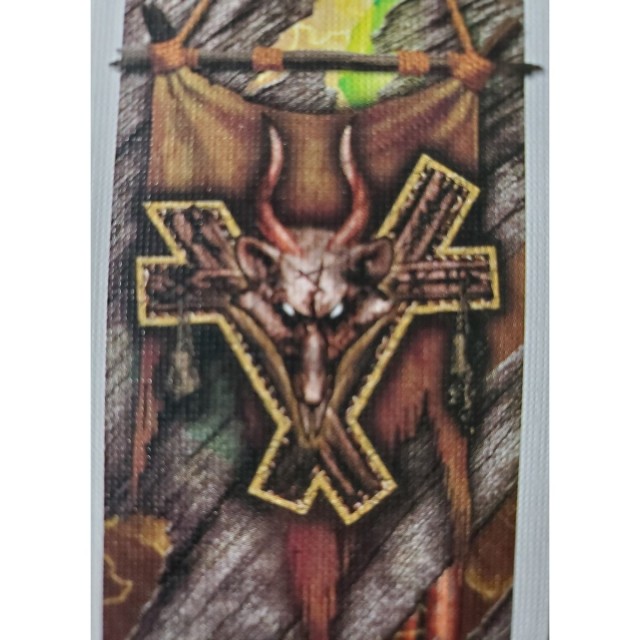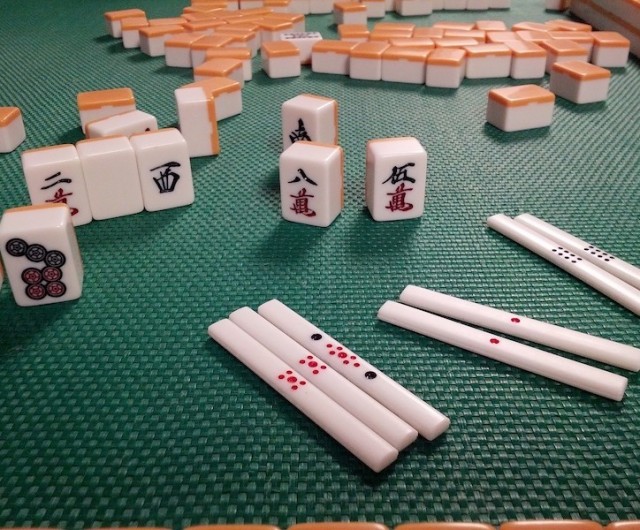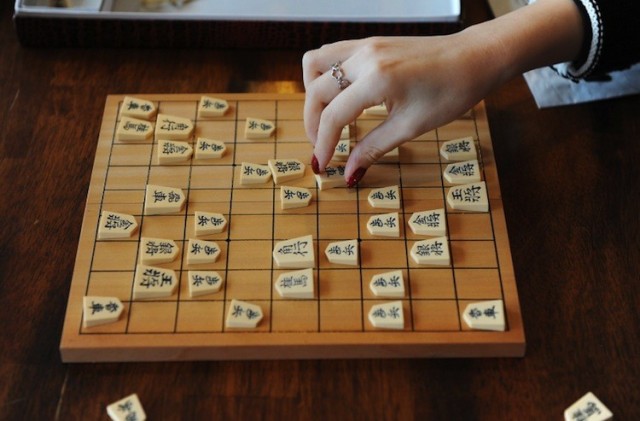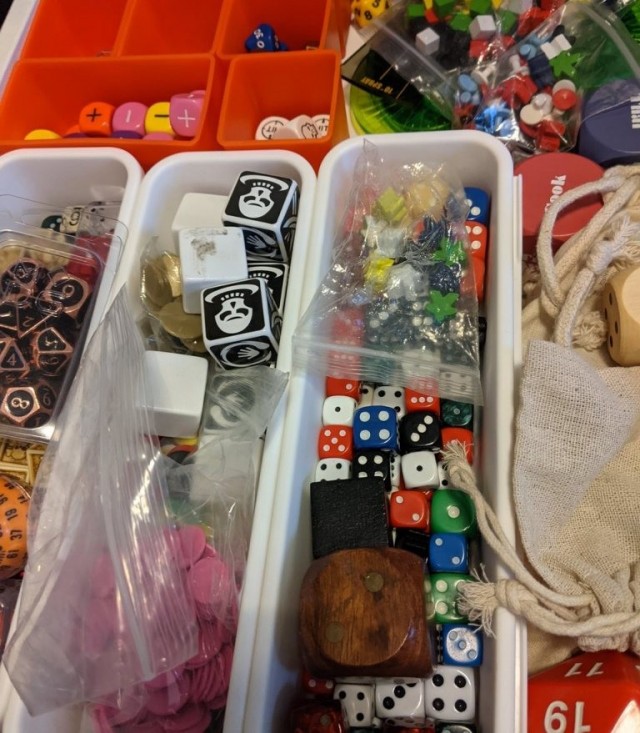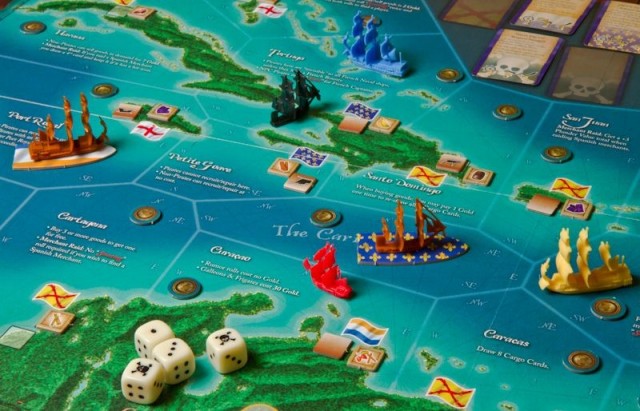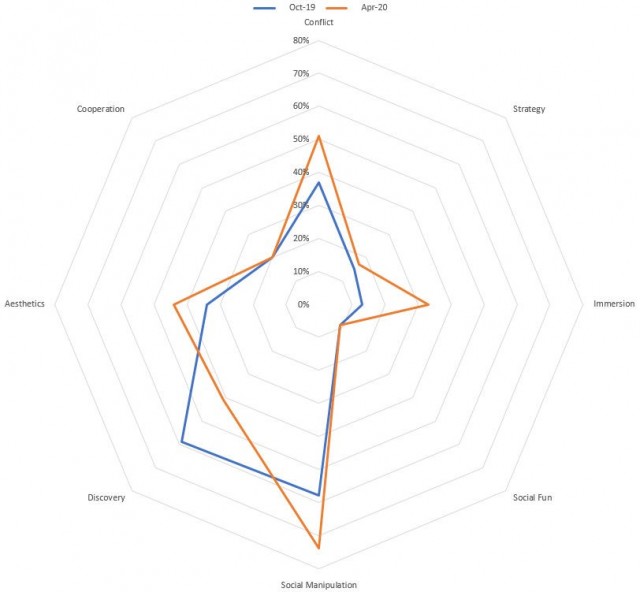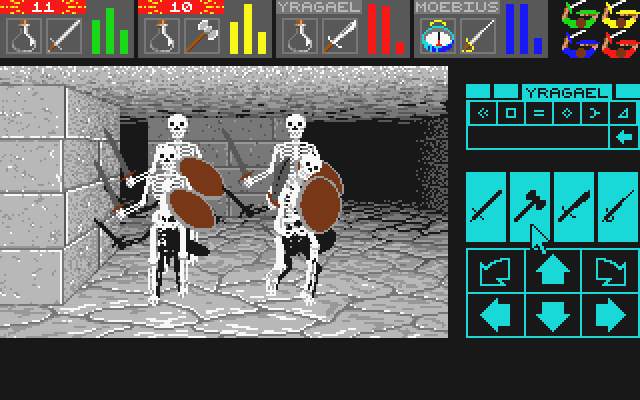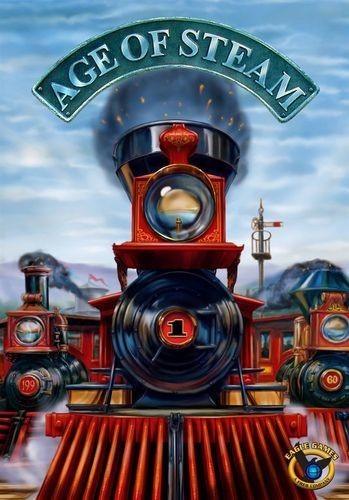I have a very clear-cut definition in my head of what constitutes a wargame. It's a conflict game which has either a historically accurate or historically plausible setting and the mechanics of which aim to produce some form of simulation, even if very low level. However it's obvious to me that this isn't actually everyone's definition of a wargame, as evidenced by the frequent inclusion on wholly unhistorical games such as OGRE in discussions of good introductory wargames. Ameritrash games are usually conflict based, and sometimes have historical settings and occasionally even make some sort of vague attempts at simulation. During my exploration of wargames I've started to see that there are in fact some fairly serious qualitative differences in the game experience that wargames offer and that it's this, rather than history, that a lot of people seem to be basing their definition of a wargame on. So I thought I'd use this weeks' slot to explore what some of those differences might be.
First up, and probably the biggest difference, is the notion of chaos. I like chaos in game design, especially when it's been injected in carefully controlled amounts to stop the game spiralling completely out of the control of the players. You can get chaos from various places in a design - from dice, random card draws, unpredictable interactions with other players. And most Ameritrash game designers also seem to be fond of using chaos to advance and improve their game designs - it's a good basis for tension and excitement and a way of keeping the players on their toes.
At first glance you might imagine that wargames are also highly chaotic games. They usually use either dice or cards or both. Some are multiplayer and the multiplayer titles make no overt attempts, unlike nearly all Euros, to limit the ways in which the players can interact with each other. Indeed on consideration you could argue that chaos in a wargame is necessary because conflict is inherently chaotic and unpredictable and history is full of real-life examples of battles or campaigns being derailed by minor circumstances of fate. The more wargames I've played and indeed the more history that I've read the more I've come to the conclusion that this is false. Most wargames go to great lengths to limit the amount of chaos that dice, cards or other players put into the game. That is in fact the function of the most wargamey mechanic of all - the combat resolution table. Until I started playing wargames I had no idea how much the experience of playing a wargame varied according to the design of it's CRT, or indeed how different they can actually be. Some are attacker-friendly, some favour the defender. Some tend to produce brutal, bloody battles, others tend toward simply pushing units back and forth and still others encourage long-term battles of attrition. But what they all have in common is that they function to modulate the worst excesses of dice rolling. If I recall correctly the 1:1 column in Battle for Germany has both sides taking damage on a 1 and on 2-5 the defender is pushed back. Contrast that with most Ameritrash combat systems which give a "hit" number and have simply success or failure based on achieving that number or not.
Even those wargames - such as the block wargames - which use a simple target-to-hit number - tend to try and do something to keep a lid on the chaos. Rommel in the Desert has a fairly non-lethal combat system in which units only fight a single round of combat each time a player activates his units. The result is that battles can theoretically last for months of game time and puts the emphasis on resolving battles either by cutting your opponents' supply route or by bringing up re-enforcements to force him to withdraw. To do either requires some clever maneuvering and so the game switches emphasis from the dice to carefully considered movement. Even Hammer of the Scots which is one of the most unpredictable and capricious wargames I know, has an ABC strike order system which serves to make things a little less chaotic than a straight up fight. Examining the more esoteric combat designs such as the combat card system of Hannibal or the diceless poker-like revelation of units in Napoleon's Triumph the trend continues. The combat card deck seems very random at first but is in fact based on a carefully statistical analysis and has a vital element of bluff, and Bowen Simmons' system is dependent on hidden units and also has a large psychological component.
What of multiple players? I did mention in passing that most multi-player wargames don't do anything obvious to discourage chaos and plotting amongst the players. But you won't see a whole lot of negotiation going on around the table when people are playing wargames. The reason is because although there's nothing overt in the mechanics which limits the ways in which the players interact, the setup and victory conditions do have a fairly profound impact. To mention Battle for Germany again there is no point in the Soviet and US players allying because in all likelihood none of the units will ever encounter each other. Similarly there's no point in the German player allying with either the US or the Soviets becuase the victory conditions for those two players require them to tear large chunks out of Germany. Even in Friedrich which is one of the more verbal multiplayer wargames I've come across, three of the sides start of allied and have to stay allied resulting in most of the negotiation between these allied powers being limited to trying to persuade each other to be the one to take on the bulk of fighting Prussia and thus the highest casualties. There are exceptions to this of course - Here I Stand is partly built around encouraging co-operation (although even here there are limited ways in which the players can interact) - but for the most part it holds true. Indeed I'm tempted to go back and answer my question from last week - as to why there aren't more multiplayer wargames around - by suggesting that the reason might well be because it's so difficult to design a multiplayer game in which this sort of chaos is kept to a minimum, such is the desire of wargamers to keep control of luck in their games.
When you examine the history, the motivation for this becomes clearer. Although people harp on about the importance of minutiate in recounting history the reality is that, especially in military history, these sorts of moments are rare, and that the focus on tiny chance having massive repercussions is there because it makes a good narrative tool and happens to be the sort of thing that readers enjoy and remember. It might have been good luck that uncertain weather cleared just before D-Day and didn't hamper the invasion, but the reality is that the Germans lost the war largely on the Eastern Front and that the eventual Allied invasion of France was inevitable - had there been a weather disaster on D-Day it would have merely prolonged the war rather than changed the victor. One could argue that the allies coming later into the fight would have resulted in more European countries coming under the communist yoke, but this is a matter for general history, not for military history and thus not, for the most part, for wargames. I could bore you with other examples but since this is a column about games and not history, I'll refrain from doing so. The fact of the matter is that for every historical situation where analysts can claim success or failure turned on a penny, there are a dozen or more where this is not so. Otherwise, why would nations spend so much time, money and effort training their armed forces to act and behave effectively in the field? So while there is the need to model some level of entropy in your game mechanics, overall the influence this is allowed to have on game outcome needs to be controlled.
The other major difference that I've noticed in the play styles of Ameritrash games and Wargames is that wargames have a certain puzzle-like quality. I alluded to this briefly in my previous discussion of Target Arnhem. On consideration it is hardly suprising that a well designed wargame should have this quality since good generalship - especially at strategic and operational levels - is as much about good logistics as it is about dazzling strategy and tactics. One must ensure that one's men are properly supplied now, that the potential for supply exists into the future (i.e. that your supply lines are protected), that re-enforcements will reach the front when and where you need them and so on. Rommel once said that "the battle, is fought and decided by the quartermasters before the shooting beings" and there is truth behind the soundbite. Really, almost any game which has some sort of logistical model as part of its mechanics is, in some sense, an efficiency puzzle. But the puzzle simile with wargames goes deeper than that because of the "what-if" aspect of the history. The aforementioned Rommel wanted Panzer divisions under his direct command so he could dig tanks in along the probable landing sites as part of his D-Day defences. He never got the opportunity to do that, so some simulations of the D-Day landings allow one to explore this possibility. This sort of what-if this, what-if that can, again, be viewed as a sort of puzzle - one could reframe all the "what-if" potentials inherent in a game into another question, which might run something like "what combination of deployments and starting strategies allow me to get the most favourable results out of this game engine?" The importance of this aspect is re-enforced by the need in most wargames to go into the game with a long-term strategy instead - as in most Ameritrash games - of kicking out of the starting gates and spending most of the game reacting to what your enemies are doing. Again, any good wargame should have its share of "what-if" scenarios in the design and so the puzzle element should show through in the eventual game.
When combined, these factors lead to a sense of weighty play that's missing from a lot of Ameritrash titles. There's a lot of skill involved when playing those AT games we love but the primary skills involved are usually based in analysing the probabilities and being good at verbal persuasion - a lot of the appeal of AT games comes from the excitement and narrative that they generate. Less so with wargames - there's lots of interlocking pieces here for you to balance, and there's the need to formulate an overall strategy, follow it up and adjust it as necessary as it almost inevitably falls to pieces in the teeth of enemy fire. There's more need generally to look and plan ahead and try out various moves and possible enemy responses in my head, working through the combinations to find the best. Some of this is down to the 2-player nature of many of these games, but it's there in many multiplayer titles as well, especially since they tend to discourage diplomacy. I have found that the feel of playing a wargame is often more like playing Chess than it is like playing Risk. Some games - especially those with even a moderately high unit density - I find too heavy for my liking. But the rest give parts of my brain that Ameritrash doesn't reach a very welcome workout indeed.
Back when the term "Ameritrash" was first being bandied about by Robert Martin I propsed that the relationships between game styles could be crudely modeled as a kind of triangle, with Euros, AT game and Wargames occupying a corner each and various hybrid game styles (such as Waros) occupying the sides between. The concept generated some discussion - some thought it valid, others thought that there wasn't enough of a dividing line between AT and Wargames to have them as separate entities and still others thought the relationship was linear, with wargames at one end, Euros at the other and Ameritrash in the middle. The more I've explored wargames the more I've become convinced that my triangular model makes sense because it seems that - in gameplay terms at least - there is a considerable relationship between Euros and Wargames. Consider - I have argued here that wargames eschew over-reliance on random chance, limit verbal player interaction, have efficiency aspects which results in puzzle-like play and tend toward the weighty in terms of intellectual challenge. These are all hallmarks which we usually attach to Euros. The resemblance ends there of course - most conspicuously wargames are longer and more complex than most Euros. But even this is changing - there is certainly a welcome trend toward shorter, simpler and more playable wargames in the modern market. The other major difference is of course that wargames involve violent and direct player interaction which is a big no-no in most Euro design and therein lies the reason why a wargame "puzzle" is more interesting to me than a Euro "puzzle". The direct interaction makes a better framework for a social experience and also allows me to feel like I'm still competing more against the brains of another player than against the game system because there's strategy and tactics alongside the logistics. It helps, of course, that Wargames have theme crammed on to them like no tomorrow - one could argue that "theme" and "simulation" in a game are synonymous, making wargames the most thematic of all games. Increasingly, since getting involved in wargames, I'm finding that they're scratching the game itches that Euros used to manage for me - although in a considerably more interesting manner. Shame that not more wargames are multi-player, since most Euros are, but there are some examples out there. With the exception of direct-interaction Euros such as Shogun and Imperial and a couple of real favourites like Citadels and Ra it seems that the Euros in my collection are increasingly coming out only for non-gamer visitors or being left to gather dust in case my daughter shows some interest in them when she's older. So try a wargame today - you may find that the path to salvation from Euro-dullness awaits.
 Games
Games How to resolve AdBlock issue?
How to resolve AdBlock issue? 
